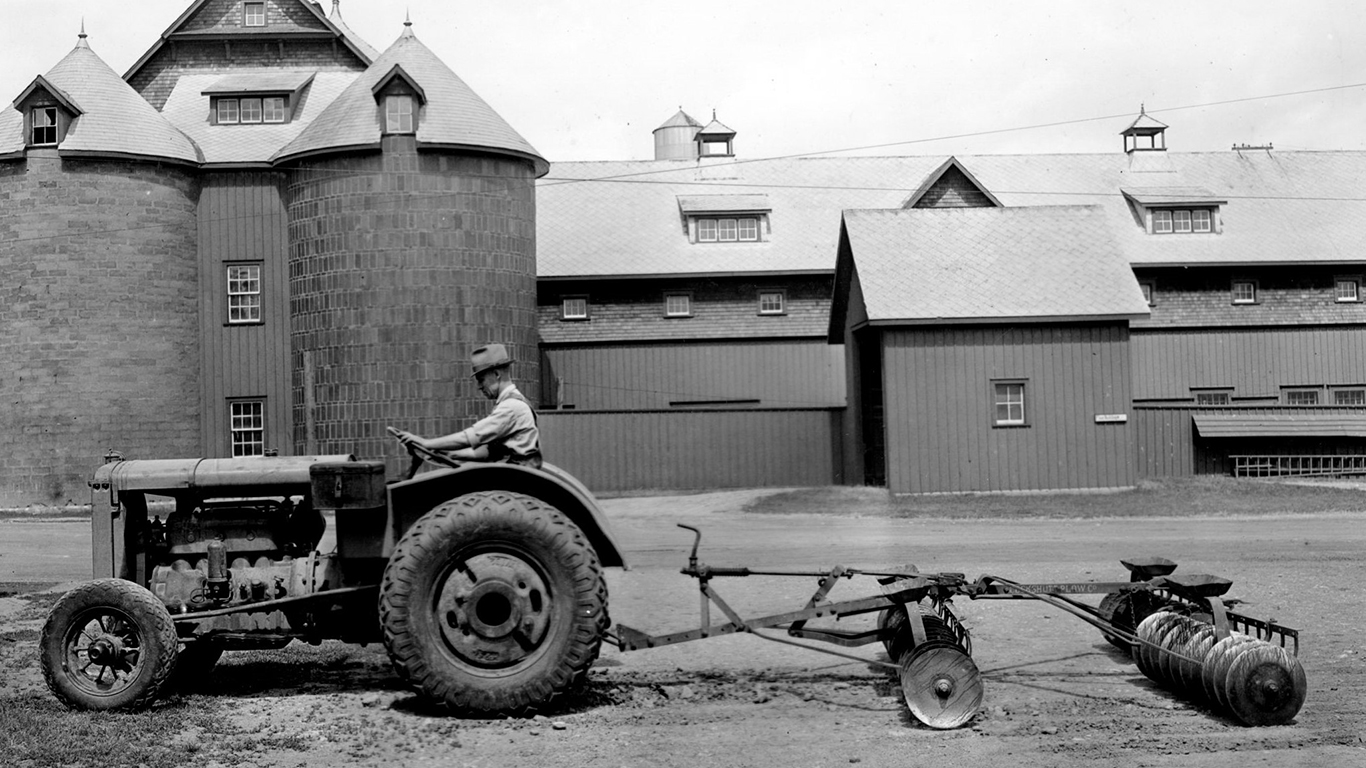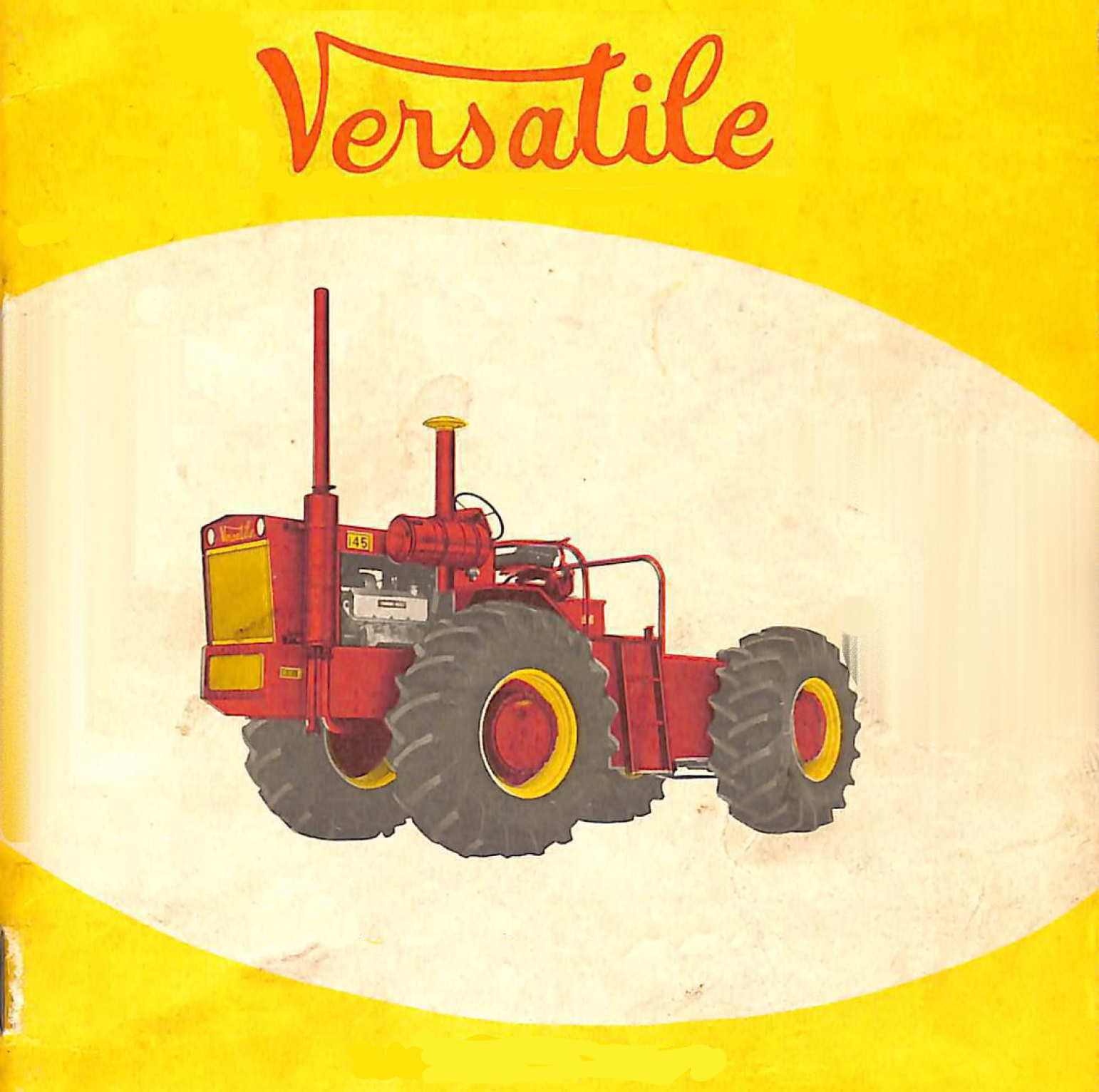
We’re well into spring, which means a lot of plowing, seeding and other activities are in full swing on farms in Canada. So, you’re likely to see a lot of tractors on the move, and you can bet Statistics Canada can tell you how many. Our friends at the Canada Agriculture and Food Museum have helped out with some fun facts and photos! So, let’s go back in time.
Tractors were large, cumbersome and expensive machines until manufacturers began producing smaller and more affordable models, like the Fordson and Farmall, in greater numbers after World War I.
“While it wasn’t instant, tractors gradually replaced horsepower,” says William Knight, curator at the Canada Agriculture and Food Museum in Ottawa. “New technologies, such as power take-off on tractors, allowed farmers to hitch a variety of implements to their tractors and power them directly, making their machines more powerful and efficient than horses.”
By 1931, the number of tractors on Canadian farms more than doubled to 105,360 even as the Great Depression affected farm households. One decade later, there were 159,752 tractors in use as farmers strove to meet the demand for food here and overseas during wartime. (Note: StatCan did not collect detailed data on the number of tractors in the 1926, 1936 and 1946 census years.)

From a 1949 Cockshutt 30 promotional brochure. Ingenium. AGR C6668 3072 1949
1951 to 1956: peak growing years for number of farms and tractors
Canadian manufacturers such as Cockshutt Plow Company in Brantford, Ontario, filled a growing demand for tractors, like the Cockshutt 30, “still prized today by farmers and collectors,” as Knight notes. By 1951, the number of tractors on farms in Canada stood at 399,683, about one and a half times the amount counted one decade earlier. This was the largest percentage increase over any 10-year period, and the first time data from Newfoundland and Labrador (126 tractors) were included after it became Canada’s 10th province in 1949.
In 1956, the number of tractors increased from 100,111 to 499,794, the largest volume increase over census years. Over one-quarter (27.2%) of these tractors were in Ontario, though more than half (55.0%) were in the Prairies. In the same year, the 388,803 farms in Canada that reported having tractors was an all-time high; however, this number steadily declined to 163,978 in 2021.
By comparison, the total number of farms (of all types) across Canada peaked in 1941, at 732,832, and also declined over the decades, down to 189,874 in 2021.
1961 to 1991: fewer farms, more tractors, better prices
Alongside the increase in tractor numbers—and decrease in farms—was a corresponding increase in tractor size and power. The Versatile 118 tractor, manufactured in Manitoba in 1967, is a case in point; with four large tires and an articulated body, it reflected farmers’ growing need for larger tractors to farm larger acreages.
The number of farms reporting tractors declined by about one-third (-34.0%) from 1961 to 253,802 in 1991. Over the same period, the number of tractors increased by one-third (+33.5%) to an all-time high of 734,149, accounting for nearly three tractors per farm.
According to a 1969 Royal Commission on Farm Machinery report on tractor and combine prices, suggested Canadian retail prices for 1966 and 1967 ranged from $3,399 for a tractor with under 45 horsepower to $13,401 for one with over 100 horsepower.
The report also noted that the removal in 1944 of tariffs on tractors and farm machinery imported from the United States largely eliminated price differences between the two countries.

From the cover of a 1969 Versatile operator's manual. Ingenium. AGR V5611 3005 1969
1991 to present: more types, better technology
Most recently, the 2021 Census counted 659,337 tractors on 163,978 reporting farms, or about four tractors per farm.
Global positioning system (GPS) technology, introduced in the 1990s, has increased in usage. According to the Farm Management Survey, 84% of field crop-producing farms used GPS in 2021.
Value of tractors, other machinery
The total market value of all 659,337 tractors (owned and leased) counted in the 2021 Census was nearly $23.8 billion, over one-third (36.9%) of the nearly $64.4 billion market value of farm machinery, equipment and vehicles and slightly higher than the proportions for the 2016 (34.6%) and 2011 (33.9%) census years.
The 52,953 tractors with over 249 horsepower made up one-third (34.0%) of the total market value of tractors in 2021. Of those, close to 8 in 10 tractors (79.9%) were on farms in the Prairie provinces, which had over 8 in 10 grain combines and swathers (81.4%) of the 121,378 in the country.
Over 4 in 10 tractors (42.9%) had under 60 horsepower, the smallest machines and the most common type reported in Canada. Tractors with 60 to 149 horsepower (37.4%) were close behind, followed by those with 150 to 249 horsepower (11.6%).
Working the future fields
Have you ever wondered what it’s like to drive a tractor? Farming For the Future is a new, long-term exhibition at the Canada Agriculture and Food Museum in Ottawa. As part of the first phase of this exhibition, you can climb aboard a life-sized tractor cab—or enter an immersive, accessible cabin at ground level—to digitally drive a tractor. See if you have what it takes to efficiently plant corn in a sustainable farming operation!
Farming For the Future explores how new agricultural practices and technologies—such as GPS guidance, drones and sensors—increase the efficiency of crop production, while reducing negative effects on our climate. You’ll discover what makes for healthy soil and why it’s vital to our farms.
To learn more, visit Farming For the Future.
Contact information
For more information, contact the Statistical Information Service (toll-free 1-800-263-1136; 514-283-8300; infostats@statcan.gc.ca) or Media Relations (statcan.mediahotline-ligneinfomedias.statcan@statcan.gc.ca).
